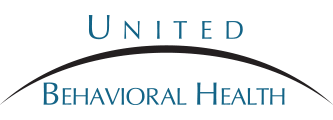Understanding Prescription Drug Addiction
Learn About Prescription Drug Addiction
Prescription drugs have allowed many people with varying physical and mental health concerns to live richer, fuller lives than would have been possible even 50 years ago. However, prescription medications are powerful drugs, and some of them carry the potential for abuse if they are misused. For example, opioid drugs, such as OxyContin, Vicodin, and morphine, can provide a powerful euphoric high if misused. Stimulants, like Ritalin and Adderall, can provide feelings of pleasure, heighten attention, and encourage weight loss when used in excess of physician recommendations. Regardless of which prescription drug a person abuses, the consequences of prescription drug abuse are no different than the consequences of illicit drug abuse. Prescription drugs have the power to help when used properly, but they also have the power to harm when used improperly.
While it is true that improper use of prescription drugs can result in addiction and a host of other negative consequences, it is also true that an addiction to prescription drugs can be overcome. With expert care in a supportive treatment environment, it is possible for individuals who are addicted to prescription drugs to rediscover a life free from addiction.
Statistics
Prescription Drug Addiction Statistics
According to the National Institute on Drug Abuse (NIDA), the most commonly-abused categories of prescription drugs are opioid pain relievers, stimulants, and antianxiety medications. A 2011 study cited by NIDA also notes that around 52 million people have abused prescription drugs at some point in their lives, and 6.1 million of these people have engaged in past-month prescription drug abuse. Over half of these people obtain their prescription drugs for free from a friend or relative. The problem of prescription drug abuse is severe: Prescription drug abuse is the United States’ second most dominant drug problem.
Causes and Risk Factors
Causes and Risk Factors for Prescription Drug Addiction
Prescription drug abuse is a multifaceted problem with multifaceted roots. Mental health experts agree that prescription drug addiction is not the result of a single factor, but instead arises out of a confluence of multiple factors, including:
Genetic: Researchers have long known that a vulnerability to drug addiction can be passed down from parents to children. Additionally, more recent research is beginning to focus on which areas of a person’s genetic code are specifically responsible for genetic vulnerabilities to addiction.
Environmental: In addition to genes, one’s environment can also affect a person’s risk for developing a prescription drug addiction. Environmental factors such as easy availability of prescription medications, pre-existing pain or mental health conditions that necessitate the use of prescription drugs, and inadequate monitoring by one’s physician can increase one’s chance of becoming addicted to prescription drugs.
Risk Factors:
- Poor coping skills
- Inadequate supervision from one’s physician
- Having a pre-existing pain condition
- History of mental health or substance abuse problems
- Easy availability of prescription medications
- Experiencing a severe injury
- Family history of mental illness or substance abuse
- Exposure to severe chronic stressors, such as poverty, unemployment, or physical, emotional, or sexual abuse
Signs and Symptoms
Signs and Symptoms of Prescription Drug Addiction
While the signs and symptoms of prescription drug abuse vary according to the length and severity of an individual’s use, the following are some common signs and symptoms of this type of substance abuse problem:
Behavioral symptoms:
- Lying or stealing
- Visiting multiple doctors in an attempt to obtain multiple prescriptions for the same medication
- Poor performance at work or school
- Deception about one’s activities or whereabouts
- Unexplained absences
- No longer participating in activities one used to enjoy
Physical symptoms:
- Tremors, shaking, or tics
- Drastic changes in weight
- Trouble sleeping
- Poor hygiene
- Slurred speech
- Loss of coordination
Cognitive symptoms:
- Slowed thought processes
- Feeling as if one is “in a fog”
- Memory problems
- Difficulty concentrating
- Poor judgment and decision-making
- Disorientation or confusion
- Hallucinations or delusions
Psychosocial symptoms:
- Changes in social circles
- Anxiety
- Depressive symptoms
- Rapid or drastic mood shifts
- Agitation, frustration, or irritability
- Feeling a lack of pleasure in one’s life
Effects
Effects of Prescription Drug Addiction
Although they are designed to be as safe as possible, prescription drugs can be misused and elicit many of the same tragic effects as other drugs. If a prescription drug addiction is left untreated, some of the following effects may be possible:
- Social withdrawal
- Damaged or broken relationships
- Organ damage
- Poor performance at work or school
- Loss of job or expulsion from school
- Long-term unemployment
- Financial instability
- Development of additional substance abuse problems
- Worsening or onset of mental health concerns
- Death from overdose or suicide
Co-Occurring Disorders
Prescription Drug Addiction and Co-Occurring Disorders
In many cases, people who feel the need to abuse prescription drugs are doing so as an attempt to cope with a co-occurring mental health disorder. Drug abuse of all kinds, including prescription drug abuse, is unfortunately common among people with co-occurring mental health disorders, and the following are some disorders that are frequently diagnosed in individuals who are also struggling with prescription drug abuse:
- Bipolar disorder
- Anxiety disorders
- Depressive disorders
- Posttraumatic stress disorder (PTSD)
- Other substance use disorders
- Eating disorders
Withdrawal & Overdose
Prescription Drug Addiction Withdrawal & Overdose
Effects of withdrawal: Given a long enough period of use, a person’s body begins to require a certain level of that person’s prescription drug(s) of choice in order to function well. When a person then attempts to quit using the substance, his or her body must undergo an adjustment period before it can function effectively without the drug. This adjustment period is known as withdrawal and can include the following extremely uncomfortable symptoms:
- Rapid heart rate
- Trouble sleeping
- Nausea, vomiting, or diarrhea
- Changes in one’s appetite
- Aches and pains
- Muscle cramping
- Tremors, shaking, or tics
- Weakness or fatigue
- Hallucinations
- Confusion
- Disorientation
- Sweating
- Restlessness
- Coma
Effects of overdose: An overdose occurs when a person ingests more of a substance than his or her body can metabolize or excrete. Overdoses are extremely dangerous and can be fatal, so if a person has been using prescription drugs and begins displaying some of these signs, it is important to seek medical attention immediately:
- Loss of color to one’s skin
- Sweating or clamminess
- Fingers, toes, lips or other extremities turning blue due to lack of oxygen
- Weak heartbeat
- Trouble communicating
- Dizziness
- Vomiting or diarrhea
- Difficulty breathing
- Loss of consciousness
- Coma






